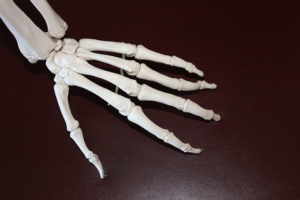Rheumatoid Arthritis Nail Changes: Early Signs and Treatment – Greatist
Fingernails looking a little funky these days? It could be a sign something’s up with your health. Changes in your fingernails and toenails can actually be a sign of a serious illness like rheumatoid arthritis (RA).
RA is an autoimmune condition that attacks joints — usually in your ha…….

Fingernails looking a little funky these days? It could be a sign something’s up with your health. Changes in your fingernails and toenails can actually be a sign of a serious illness like rheumatoid arthritis (RA).
RA is an autoimmune condition that attacks joints — usually in your hands, wrists, and knees. This causes inflammation of the joint lining and tissue damage that leads to chronic pain and joint damage. This tissue damage can also target your organs.
Nail changes may signal a problem before other RA symptoms show up. If you have RA, the color, shape, or surface of your nails — and even the way your nails attach to your skin — can change.
People who live with RA experience periods of flare-up and remission of symptoms. If left untreated, RA can permanently damage your bones and joints.
Yellow nail syndrome
According to the American Academy of Dermatology Association, RA may cause nails to turn yellow. A type of medications called thiol drugs, which are used to treat RA, may also contribute to nail yellowing.
With yellow nail syndrome, nails become yellow, thicker, and curved. Nails may also stop growing, and the cuticles can disappear. Worst-case scenario, nails separate from the nail bed and fall out. This can lead to an infection of the tissue around your nails.
Longitudinal ridging
Onychorrhexis — aka longitudinal ridging — occurs when grooves develop that run the length of your nails, from base to tip. Ridges like these can be a symptom of RA.
Deep ridges may cause a fissure where the nail splits lengthwise. Regardless of the cause of ridging, fissures or any damage to the nail bed can make you susceptible to infection.
Splinter hemorrhages
A splinter hemorrhage is a small brown, black, or reddish line or spot under your fingernail caused by tiny inflamed blood vessels leaking under the nail. It looks sort of like a splinter stuck under your nail and usually isn’t painful.
Splinter hemorrhages can result from an injury to the nail, but they can also be a sign of systemic disease. If you notice splinter hemorrhages on multiple nails without any evidence of injury, they could be a symptom of RA.
Other potential changes
While they’re not as common, keep an eye out for these nail changes if you’re having other symptoms of RA or are at greater risk of RA:
- Capillary changes. Capillaries under and around nails may become enlarged or deformed or bleed. Doctors can examine with a magnifying dermascope to see problems that aren’t visible to the eye.
- Clubbing.</…….
Source: https://greatist.com/health/rheumatoid-arthritis-nail-changes







